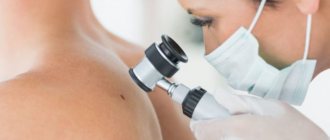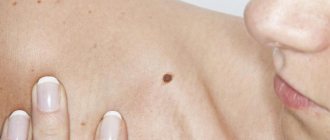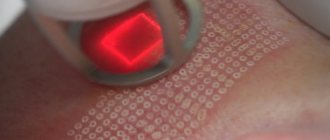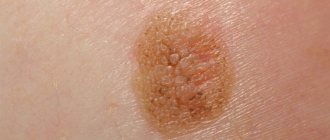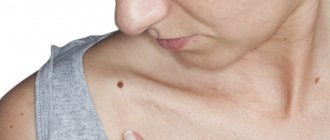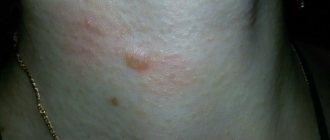Every person experiences tooth extraction sooner or later. The first experience was with baby teeth, but, as a rule, no problems arise with them, and they fall out safely even without medical assistance. But with permanent teeth the situation is different. Due to their complex root system, it is sometimes very difficult to remove them, and various additional techniques have to be used. Fortunately, modern dentistry has a whole range of modern methods that are low-traumatic and allow you to cope with even the most complex cases.
What are the indications for tooth extraction?
Tooth extraction in dentistry is always a last resort procedure. Doctors make every effort to save the tooth or at least part of it, but in some cases extraction cannot be avoided. We are talking about many conditions.
- Chronic periodontitis, which is in the acute stage. As a rule, if the inflammatory process continues to recur, it is recommended to remove the tooth to prevent further spread of the infection.
- Very strong and deep carious lesion of the tooth.
- Odontogenic osteomyelitis, which usually develops as a complication of infection and is characterized by damage to bone tissue.
- The tooth constantly injures soft tissues. This happens especially often if the tooth is in an incorrect position. Permanent trauma is very dangerous, therefore, if the problem cannot be solved in another way, removal is recommended.
- Fracture of a tooth root or any other mechanical damage.
- Late stages of periodontitis, when the teeth begin to become very loose.
- An impacted tooth that cannot erupt and is covered on top by gum tissue. Most often this happens with wisdom teeth.
- Carrying out orthopedic treatment or prosthetics that cannot be done without removing one or more teeth.
Contraindications to tooth extraction
Of course, if the situation is urgent and tooth extraction is inevitable, the doctor will perform the procedure immediately after the patient seeks help. But if the operation is planned, then in some cases it is recommended to refrain from it. Contraindications include the following conditions:
- acute viral disease, pneumonia;
- oncology;
- some blood diseases;
- recent myocardial infarction;
- tumors and other lesions in the oral cavity.
In addition, tooth extraction is a procedure undesirable for pregnant women. But if it cannot be avoided, then doctors recommend, if possible, to carry it out in the second semester.
Causes of skin tumors
The reasons for the development of most benign neoplasms are not clear (except for papillomas (warts), molluscum contagiosum). Based on the results of many years of research, scientists have identified a number of factors predisposing to the development of tumors and epidermal growths. A common cause of pathological growth of the skin is frequent damage, as a result of which cells are actively regenerated and lose control over division. Common causes of pathology include all types of radiation (ultraviolet, x-ray). Genetic predisposition also plays a key role in the formation and malignancy of tumors.
Preparing for tooth extraction
For many people, tooth extraction is a very unpleasant and even frightening procedure. In fact, such fears are a consequence of those times when this manipulation was done without anesthesia using rough instruments. Today dentistry has stepped far forward, so removal takes place in much more comfortable conditions. You should not be afraid of the procedure, because the right psychological attitude is also one of the important conditions for the success of the operation.
To ensure that no incidents occur during tooth extraction, you must inform the surgeon about your state of health. If you have allergies, chronic or acute illnesses, be sure to tell your doctor. The same goes for the medications you take. Avoiding complications will also help avoiding alcohol and cigarettes the day before the procedure.
It is important to remember that you will not be able to eat or drink for some time after tooth extraction. Therefore, it is recommended to eat well before the procedure.
Anesthesia for tooth extraction
Tooth extraction is a rather painful procedure, so it is almost never performed without anesthesia. The exception is people with allergies to anesthetic drugs. Most often, when extracting teeth, local anesthesia is used using an injection. Usually we are talking about the so-called conduction anesthesia, which is injected directly into the nerve and has an increased concentration of the active substance. Naropin, ultracaine, ubistezin, etc. are used as the latter.
In addition to local anesthesia, general anesthesia may also be used during tooth extraction. Today, sedation is the most popular. This is a procedure in which the patient is given a strong sedative. He is in fact conscious, but does not feel pain and remains as if in a dream. Anesthesia is a more serious procedure that involves complete loss of consciousness, which in turn entails a longer recovery period.
General anesthesia for tooth extraction is used if the patient is intolerant to drugs for local anesthesia. In addition, it is used if a person has mental disorders, as well as if he experiences severe fear of the procedure. It is also justified if several teeth are to be removed at the same time. For example, sedation is often used when wisdom teeth are extracted. The procedure is done under the supervision of an anesthesiologist. Before the manipulation, the patient undergoes tests, performs a cardiogram and other procedures to diagnose the condition of the body.
What methods of tooth extraction are used?
In modern dentistry, different methods of tooth extraction are used. In most cases, the choice of one method or another depends on the characteristics of a particular situation.
Simple method
In this case, we are talking about removing a tooth with a well-preserved crown, which is located in an accessible place. And although extraction is carried out exclusively by surgeons, such manipulation, especially in public clinics, is often performed by dental therapists.
During tooth extraction, a specialist uses different instruments. First of all, these are tongs. They vary depending on what teeth they are used for. For example, there are S-shaped forceps that are used to remove premolars and molars in the upper jaw, or forceps that are used to remove exclusively lower molars. In addition to forceps, luxors and elevators are also used, which perform the functions of lever tools.
Direct tooth extraction can occur in different scenarios. So, when extracting a single-rooted tooth, the doctor uses a technique called rotation. It involves rotating the tooth around its axis, which allows you to quickly remove the element. If the tooth is multi-rooted, then luxation or rocking is necessary. Thanks to gradual loosening movements, the doctor gradually extracts the tooth along with the root.
Complex method
Complex extractions are usually performed on multi-rooted teeth. The fact is that sometimes even prolonged swinging of the tooth does not produce results. In such a situation, the specialist uses a drill and saws the tooth, separates the roots and gradually removes all the parts. A similar procedure is also often used when the crown of the tooth is severely damaged or there are other serious problems, for example, the root system is too thin and fragile. The situation is even more complicated if the tooth is completely or partially impacted or is in an incorrect position. In particular, this often happens with wisdom teeth. In such a situation, it is necessary to first cut through the soft tissue and only then saw the tooth itself.
Piezosurgery
This method is innovative, so it is not yet widespread. Piezosurgery is usually used to remove complex teeth. In this case, the tissue incision is made with an ultrasonic scalpel. This method is much less traumatic, since ultrasound in no way directly comes into contact with tissues. Thus, the patient recovers much faster than after conventional surgery.
Laser tooth extraction
As in the case of piezosurgery, in this case the tooth is removed not with conventional instruments, but with the help of a laser beam. This is also a non-contact technique associated with less blood loss and less risk of injury. In addition, the pain of the procedure itself when using a laser is much lower, so this option is suitable for people who suffer from allergies to anesthetics. Unfortunately, both piezosurgery and the use of laser are quite expensive manipulations, so they are not yet performed widely.
Electrocoagulation
Electrocoagulation uses a device that generates an electric current. The electrode or loop that the doctor manipulates becomes very hot. Essentially, the wart is “burned out,” which leads to its destruction. Vessels coagulate under the influence of high temperatures.
This method is considered the most painful of those listed - anesthesia is almost always required. Unfortunately, after electrocoagulation, warts sometimes recur, and the appearance of scars and pigment spots is possible. That is why electrocoagulation is used to remove tumors on open areas of the skin only when other methods are not available.
Tooth extraction procedure: what is important to know?
The removal of each tooth can take place according to a different scenario. To predict it, the doctor conducts an examination and also takes an x-ray. In most cases, removing teeth from the upper jaw is easier and faster, but teeth on the lower jaw can create certain problems. This is explained by the fact that the lower chewing teeth have a much more complex root system. In addition, the bone tissue itself is denser here.
Also, before the procedure, it is important for the patient to prepare for how long it may last. As a rule, simple tooth extraction goes very quickly. The doctor needs 5-10 minutes to carry out all the manipulations. However, if we talk about complex removal, then in this case the time spent in the office may last for 20-60 minutes.
What care is required after tooth extraction?
Regardless of whether you had a simple or complex tooth extraction, such a situation requires monitoring your well-being and the wound surface on the gum. First of all, this concerns the proper healing of the hole. Ideally, a blood clot should form in it, which indicates that healing is proceeding without problems. It is for this purpose that the doctor immediately after the procedure places a gauze swab into the resulting cavity. It must be kept in the indicated place without removing it for 20-30 minutes, and only after that can it be removed. If the hole has formed correctly, then in a couple of days it will be covered with epithelium, and after a couple of months new bone tissue will appear in its place.
In order not to interfere with the proper healing of the wound, you must follow the following recommendations:
- Do not rinse your mouth for a couple of days or use a toothbrush in the area where the tooth was removed;
- For the first time after the procedure, avoid hot drinks and food;
- do not take a hot shower or bath for 2-3 days after tooth extraction;
- for the first few hours, completely abstain from food and drinks;
- Until the wound heals completely, try to chew on the other side of your mouth.
Many people experience swelling in the area where the tooth was removed, which can last for several days. To make it less pronounced, it is recommended to apply ice to the cheek after the procedure. Minor pain and low-grade fever may also be a concern. This is considered normal, and to alleviate the condition, the doctor prescribes painkillers. He may also prescribe an antibiotic if in a particular case he considers its use justified. In such a situation, it is extremely important to undergo a full course of treatment in strict accordance with the doctor’s recommendations.
If a mole blooms...
You should immediately make an appointment with a dermatologist if:
- The mole changes (malignization).
Signs of a malignant process can be any changes in the size and shape of the nevus (for example, if the edges become uneven), inflammation, bleeding, the appearance of tubercles and asymmetric inclusions. It is also important to pay attention to the color of the mole - in normal condition it should not change.
- There is a risk of injury.
If a mole is located in a place that is constantly subject to friction with clothing, doctors recommend removing it without waiting for traumatic consequences that can cause complications.
- Unaesthetic appearance or too large sizes.
If a mole poses a cosmetic problem for the patient, removal will be the best solution. Most often, patients note problems with aesthetics when the nevus is located on the face.
Possible complications after tooth extraction
In some cases, tissue healing after tooth extraction does not occur correctly, or an infection is observed. In this situation, we talk about complications after surgery. They are indicated by severe pain, great swelling, and elevated temperature. If pathogenic microflora gets into the wound, then bad breath and purulent discharge may also appear. The listed symptoms may indicate a cyst or fistula.
A common complication after tooth extraction is alveolitis. This condition is accompanied by a dry socket, that is, the absence of a blood clot. The main sign of pathology is quite severe pain. Alveolitis is most often diagnosed in women taking contraceptives and in people who smoke.
The development of complications after tooth extraction is often a consequence of neglecting the doctor’s recommendations. In addition, the reason may be related to poorly performed manipulation or low qualifications of the doctor. That is why it is always important to contact experienced specialists who master modern techniques and cope well with even the most complex and extraordinary cases.
come back
Types of benign neoplasms
The most common benign skin tumors are:
- moles and nevi - congenital or acquired hyperpigmented spots
- papilloma (wart) – represented by a papillary growth or growth on a stalk of viral etiology (it is provoked by the human papillomavirus)
- lipoma (wen) – formed from the fatty layer
- atheroma - a cyst from the epithelial layer, prone to inflammation and suppuration
- dermatofibroma - a nodule of connective tissue
- hemangioma - pathological proliferation of vascular tissues
Borderline neoplasms include freckles and xeroderma pigmentosum.
